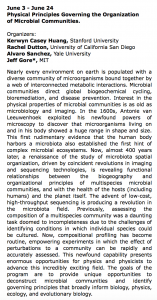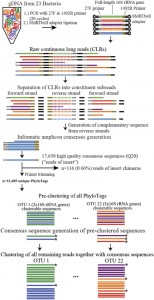This could be interesting – a workshops this summer at the Aspen Center for Physics. June 3 – June 24 Physical Principles Governing the Organization of Microbial Communities. Organizers: Kerwyn Casey Huang, Stanford University Rachel Dutton, University of California San Diego Alvaro Sanchez, Yale University Jeff Gore*, MIT Nearly every environment on earth is populated …
This seems like it could be of interest to microbial community researchers: The ISME Journal – High-resolution phylogenetic microbial community profiling Abstract (with bolding by me) Over the past decade, high-throughput short-read 16S rRNA gene amplicon sequencing has eclipsed clone-dependent long-read Sanger sequencing for microbial community profiling. The transition to new technologies has provided more …
Following the last posts about sampling in buildings and other man-made environments, I would like to share the paper I will present at Healthy Buildings 2015 Europe. The paper mainly focuses on sampling advice for practitioners, but we have also tried to explain what the concept of «building microbiome» means to us. Although buildings are not living …
Paper of potential interest to the microBEnet crowd: Phylogenetics and the human microbiome. It is a preprint in ArXiv by Erick Matsen. It focuses on the human microbiome but discusses the history of methods for phylogenetic analysis of microbial communities and it is quite good. Thanks to Erick for posting this to arXiv so that people …
This weekend while cleaning my dishes I noticed a troubling rotten-egg odor emanating from the drain, helpfully reminding me that it was not only time to run the garbage disposal but also to clean out the sink. “I think our colonies of sulfate reducers are coming along well,” I quipped to my roommate. But being …
Starting in the fall of 2012 we began a second project to involve undergraduates (and a high school student) in real research that relates to the microbiology of the built environment. This time we looked at biogeography and succession in microbial communities found in aquariums. A description of the project can be found here and …

